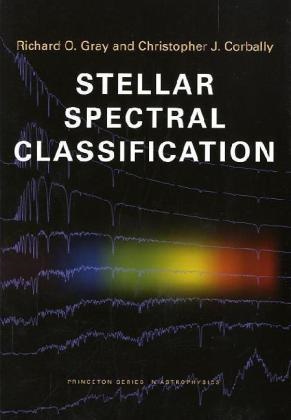Read more
Zusatztext "Anyone interested in learning about the classification of stellar spectra will be well served if they begin by consulting a new book entitled Stellar Spectral Classification . Beautiful illustrations and examples are given at every turn. . . . We can confidently say that this is not only a superb text but is probably the most comprehensive single-volume text currently available on the fascinating subject of stellar spectral classification. A valuable resource for the astronomical community! it exudes authority. This is no surprise for the book's authors and contributors are amongst foremost authorities in this field. Summing up! we can say that our first look at this book made us really excited." Informationen zum Autor Richard O. Gray is professor of astronomy at Appalachian State University. Christopher J. Corbally , SJ, is a vice director of the Vatican Observatory and adjunct associate professor of astronomy at the University of Arizona. Klappentext Written by leading experts in the field, Stellar Spectral Classification is the only book to comprehensively discuss both the foundations and most up-to-date techniques of MK and other spectral classification systems. Definitive and encyclopedic, the book introduces the astrophysics of spectroscopy, reviews the entire field of stellar astronomy, and shows how the well-tested methods of spectral classification are a powerful discovery tool for graduate students and researchers working in astronomy and astrophysics. The book begins with a historical survey, followed by chapters discussing the entire range of stellar phenomena, from brown dwarfs to supernovae. The authors account for advances in the field, including the addition of the L and T dwarf classes; the revision of the carbon star, Wolf-Rayet, and white dwarf classification schemes; and the application of neural nets to spectral classification. Copious figures illustrate the morphology of stellar spectra, and the book incorporates recent discoveries from earth-based and satellite data. Many examples of spectra are given in the red, ultraviolet, and infrared regions, as well as in the traditional blue-violet optical region, all of which are useful for researchers identifying stellar and galactic spectra. This essential reference includes a glossary, handy appendixes and tables, an index, and a Web-based resource of spectra. In addition to the authors, the contributors are Adam J. Burgasser, Margaret M. Hanson, J. Davy Kirkpatrick, and Nolan R. Walborn. Zusammenfassung Written by leading experts in the field, Stellar Spectral Classification is the only book to comprehensively discuss both the foundations and most up-to-date techniques of MK and other spectral classification systems. Definitive and encyclopedic, the book introduces the astrophysics of spectroscopy, reviews the entire field of stellar astronomy, and shows how the well-tested methods of spectral classification are a powerful discovery tool for graduate students and researchers working in astronomy and astrophysics. The book begins with a historical survey, followed by chapters discussing the entire range of stellar phenomena, from brown dwarfs to supernovae. The authors account for advances in the field, including the addition of the L and T dwarf classes; the revision of the carbon star, Wolf-Rayet, and white dwarf classification schemes; and the application of neural nets to spectral classification. Copious figures illustrate the morphology of stellar spectra, and the book incorporates recent discoveries from earth-based and satellite data. Many examples of spectra are given in the red, ultraviolet, and infrared regions, as well as in the traditional blue-violet optical region, all of which are useful for researchers identifying stellar and galactic spectra. This essential reference includes a glossary, handy appendixes and tables, an index, and a Web-based r...

